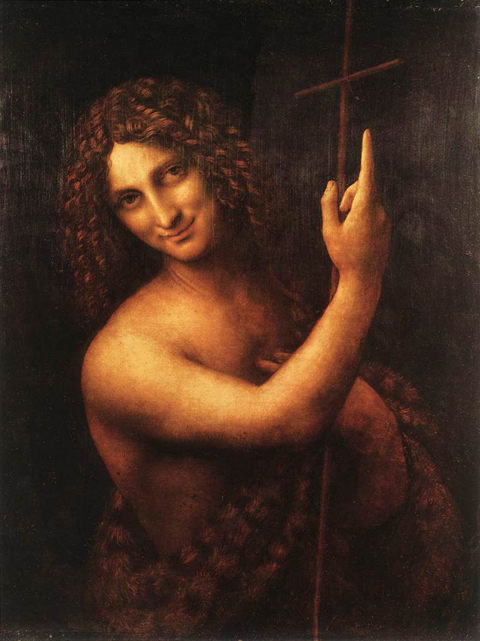Thursday, June 16, 2011
Sunday, December 26, 2010
Friday, September 24, 2010
The Dam, The Renaissance, da Vinci and the sound of silence

The Renaissance 1450-1600 introduced the idea of music with parts that are independent of one another--or the concept of polyphony. Music then became more complex, there were more things to hear. This layering of sound needed a kind of visualization for it to be "heard." Or, in other words, sound became multi-sensory.
Da Vinci noted two types of visualization, "Post-imagining--the imagining of things that are past," and "preimagining--the imagining of things that are to be."
In 1931, inside the diversion tunnels at the Hoover Dam, there also was this kind of urgent, consistent, polyphony of sound, with drills running, power shovels removing muck, the jumbo rig hauling men forwards and backwards as generators and compressors edged on. It was sound that could spark memory in a man. For it seems the unfamilar polyphony soon enough became familiar. And with this familiarity so etched in the mind, it would forever after quicken a memory.
In the midst of all this, dam workers were constantly looking into the throat of the tunnel, imagining the end way through. The polyphony of sounds combined with this strain in the direction of their visualization may have helped them push harder at their jobs than they would have ever expected.
Under layers of rock were layers of sound and layers of men in self-possessed silence, listening by way of visualization.
Monday, September 20, 2010
New Visions for a New West?

Embracing ambiguity, paradox and uncertainty was certainly a core theme in Leonardo da Vinci's work. However, such contemplation of opposition was not a popular goal in America during the early 1930s. It was important at this time to address the things that were believed to be out of control, such as the Colorado river, and controlling it, regulating it, limiting the uncertainty of its force and direction.
Those that endorsed Secretary of the Interior Wilbur's sentiment for "balancing nature" with "New Visions for a New West" were likely to find the building of the Hoover Dam nothing less than an inspiration. It would be a testament to forgetting the past and whatever horrors lurked there. Yet forgetting the past would also mean overlooking the lesson that might be learned. And as we know, history teaches nothing.
We yearn to forget how old promises have failed, we seek security, look towards a shore of hope especially when we feel we've been drowning. And thus, in the seemingly fretful times of the 30s, a new working class was born. Glad for the job which just afforded the grub many had forgotten they could grow in their own backyards. Glad to be off the streets, with something to do, working towards something, anything.
Never mind their own inspirations. Too much ambiguity. Rather compose the senses working for a vision known.
To study, to embrace the unknown, or as Leonardo da Vinci contemplated as the great "tension of opposites," would be too intense for these times, due to a shared "belief" easily clouding perceptions. A belief that this was an intense time in American history, and what people needed and wanted was relief not more tension.
Build. Employ. Don't look back. The precepts for five years as the dam went up.
Saturday, September 11, 2010
Leonardo da Vinci - building a miracle

The Hoover Dam was built in five years, three shifts working 24 hours a day. The men did not have days off. It was said that if you weren't dead you better get to work. Babies or men, that's all there were on the dam. Meaning, if you cried about how hard things were, you were fired. And if you were a man, you took the work and shut up.
Yet Leonardo da Vinci, the godfather of water theory, noted this in his Treatise on Painting, "...it is well that you should often leave off work and take a little relaxation because when you come back to it you are a better judge."
Had some of the men building the dam taken breaks from their work, perhaps the percentage of accidents would have been less. There were supposedly less than 100 men killed in all five years, which is a fairly good record, considering the danger at hand. However, there were many more men that became ill, whether from dysentery (bad water and food) heat exhaustion or carbon monoxide poisoning. There is of course no record of the illnesses such as these, since if a man wasn't dead he was presumed to be working.
To be a better judge of circumstances regarding work, means really to be a better judge of what's good for you, what's good for the environment, what's good for the job at hand. Given, the dam is a miracle, built by those who worked nonstop, it's a wonder. Yet someday we may look upon the dam like we gaze upon the pyramids, and in this wonder, because of this wonder, we will find the time to relax, if only for a moment.
Thursday, September 9, 2010
Leonardo da Vinci and The Hoover Dam

(http://i.ytimg.com)
Leonardo da Vinci once wrote, "The highest happiness becomes the cause of unhappiness..."
Might this quote be applied to the building of the Hoover Dam? To many, the dam represents a kind of highest happiness, particularly regarding its artful design, it's reach into the sky at 725 feet. It was an amazing feat in the 1930s when it was finished, and remains a landmark of the North American continent.
However, when understanding that this dam changed the Colorado River permanently, changed its course forever, marking the evironment in ways that can be considered destructive, the dam is nothing to be proud of. To some, it is seen an actual cause of unhappiness.
Therefore, would Leonardo da Vinci support the idea of building the Hoover Dam today? As a means of controlling what once was a river prone to flooding, he may have seen the dam as productive. He may have seen it as a means to Southern California obtaining their highest happiness of irrigation and abundant water supply.
Yet, he also may have supported those who believe to tame a river is a means of destroying it and the environment, albeit slowly. He may have taken a progressive look into the future and perceiving factors such as silt build up, salinity factors, use and pollution of watersheds, he may have, given enough time, discovered another way to control the river.
I'd like to think da Vinci would participate in viewing the ecological factors of this dam, (knowing first what would cause unhappiness instead of the other way around) and demonstrate through his art, his power of observation, an analysis that would extend beyond immediacy or profit. In other words, I would like to believe he'd find the elements of the river sublime, of the highest happiness. And thus any project that would change its course would be in effect, reverently considered.
Tuesday, September 7, 2010
Leonardo da Vinci's experience in the belly of the whale

First, to address the belly of the whale...
As Joseph Campbell explains:
The idea that the passage of the magical threshold is a transit into a sphere of rebirth is symbolized in the worldwide womb image of the belly of the whale.
The hero, instead of conquering or conciliating the power of the threshold, is swallowed into the unknown and would appear to have died. This popular motif gives emphasis to the lesson that the passage of the threshold is a form of self-annihilation. Instead of passing outward, beyond the confines of the visible world, the hero goes inward, to be born again...[a] life-centering, life-renewing act.
Leonardo da Vinci took on the world by asking questions about everything he experienced. This said, he may have appeared continually passing across this threshold, from outside to inside and back again. Perhaps this is why he did not finish his work at times. He was constantly in passage, neither outward, beyond the confines of the visible world, nor inward, engaging in so-called self-annihilation.
Therefore, da Vinci might be said to be an explorer rather than a seeker. His observations rapid, nearly brisk. His wellspring of questions allowing him transitions from one subject to another seemingly effortless. For example, drawings of his studies of birds in flight might occur in the morning while his theory of water may have been thought through late at night under a yellow-flamed kerosene lamp.
Subscribe to:
Posts (Atom)



